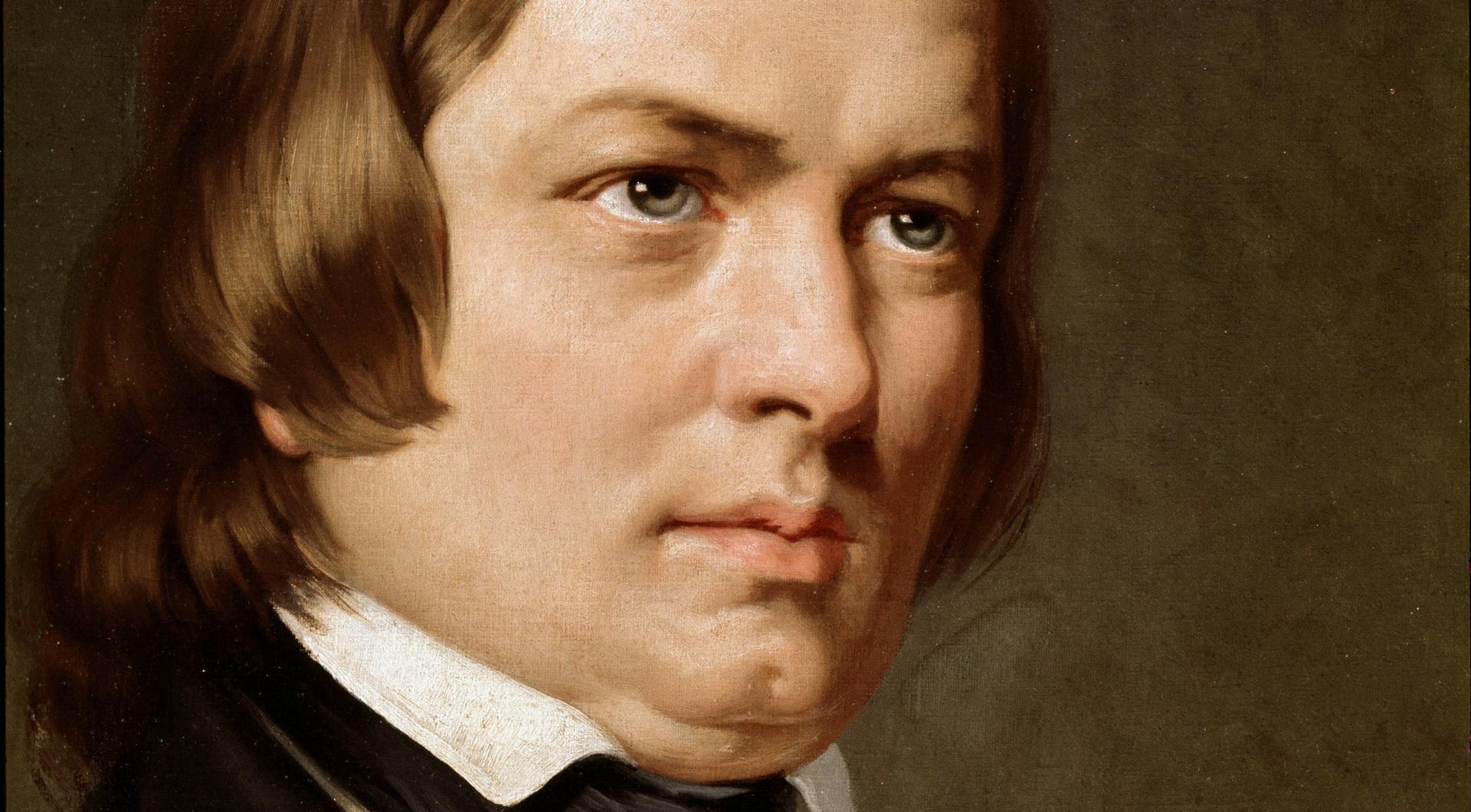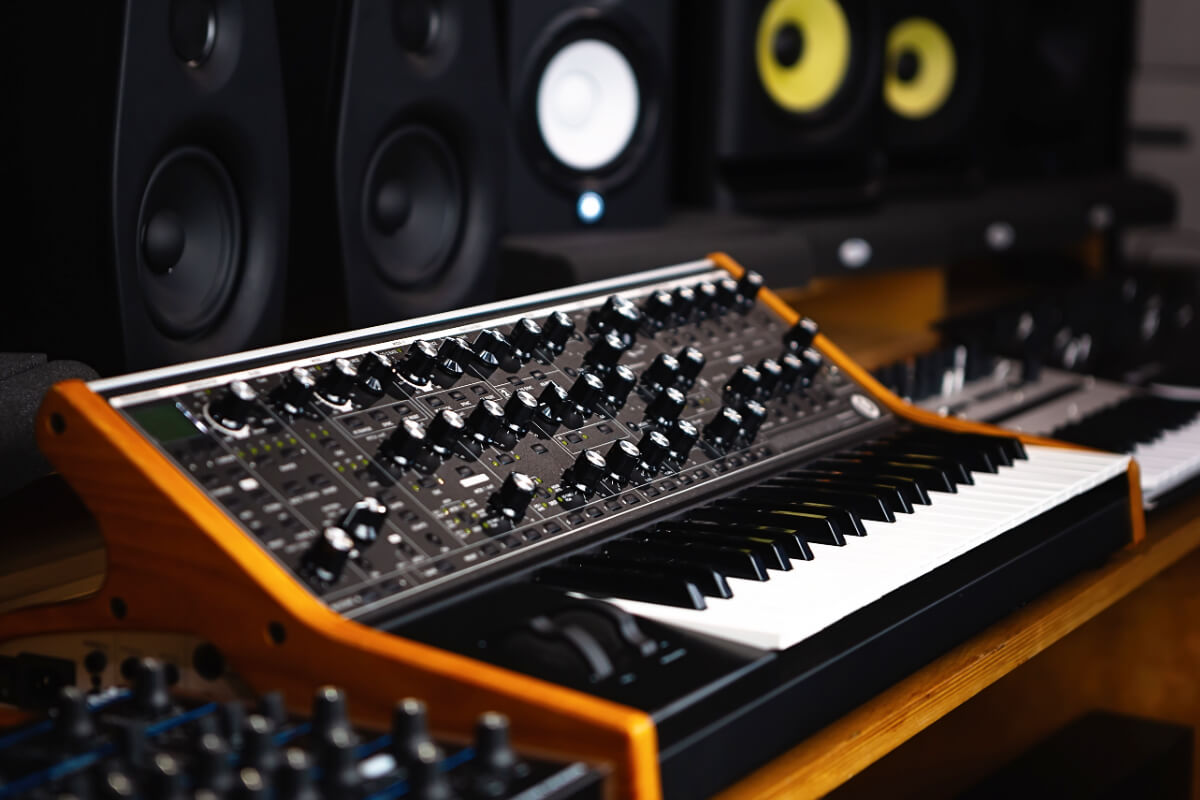Home>Production & Technology>Composer>What Type Of Piano Composer Was Schumann


Composer
What Type Of Piano Composer Was Schumann
Modified: February 10, 2024
Discover the unique piano compositions of renowned composer Robert Schumann, and delve into the distinctive style and innovation that made him a celebrated figure in classical music history.
(Many of the links in this article redirect to a specific reviewed product. Your purchase of these products through affiliate links helps to generate commission for AudioLover.com, at no extra cost. Learn more)
Table of Contents
Introduction
Robert Schumann, a renowned composer of the Romantic era, was a master of musical storytelling, evoking powerful emotions and expressing profound depth through his compositions. Born on June 8, 1810, in Zwickau, Germany, Schumann’s musical journey began at a young age, guided by his passion for both music and literature.
Schumann’s unique style and his ability to intertwine music and poetry earned him a special place in the history of classical music. He followed the footsteps of other great composers of his time, like Beethoven and Mozart, but carved out his own artistic path, creating a distinct musical language that captured the essence of the Romantic period.
Throughout his career, Schumann composed a vast array of works, including symphonies, concertos, chamber music, lieder (art songs), and piano music. His compositions are characterized by their introspective nature, rich harmonies, and lyrical melodies that transport listeners to a world of intense emotions and introspection.
In this article, we will delve into the life and musical journey of Robert Schumann. We will explore his early influences, the impact of literature and poetry on his compositions, his development of a unique musical style, his significant works and contributions, as well as his personal life and struggles. Finally, we will examine Schumann’s enduring legacy and the profound influence he had on future generations of composers.
Early Life and Musical Education
Robert Schumann was born into a family that nurtured his musical talents from an early age. His father, Friedrich Schumann, was a bookseller and a writer, who introduced young Robert to literature and the arts. However, it was his mother, Johanna Christiane, who first noticed his affinity for music and encouraged him to pursue it. She provided him with piano lessons and supported his passion for composing.
At the age of six, Schumann began his formal musical education. He studied piano with Johann Gottfried Kuntsch and soon demonstrated exceptional skill and musical intuition. His progress was remarkable, and by the age of nine, he was already performing in public concerts.
Despite his early success as a pianist, Schumann’s dreams of becoming a renowned concert pianist were shattered when he injured his right hand at the age of 20. This unfortunate incident forced him to shift his focus to composition and conducting. Although devastated by the setback, Schumann’s compositional journey began to flourish.
During his time at the University of Leipzig, Schumann immersed himself in the study of music theory and composition. He avidly explored the works of classical composers such as Mozart, Beethoven, and Bach, finding inspiration in their innovative approaches to musical structure and expression.
While studying in Leipzig, Schumann also came into contact with influential musical figures of the time, such as Felix Mendelssohn and Hector Berlioz, who guided and mentored him. Their support and encouragement nurtured Schumann’s developing musical voice.
In the early 1830s, Schumann moved to Heidelberg to continue his studies in law. Although he pursued a degree in law, his passion for music remained undiminished. Schumann sought opportunities to collaborate and perform with other musicians, both as a pianist and as a composer.
The combination of his musical upbringing, formal education, exposure to the works of other composers, and his own artistic curiosity laid the foundation for Schumann’s unique musical style. It was during this period that he began composing his own works and experimenting with different forms and genres, setting the stage for his later musical accomplishments.
Influence of Literature and Poetry
One of the defining aspects of Robert Schumann’s musical style and artistic vision was his deep connection to literature and poetry. Schumann believed in the unity of the arts, viewing music and literature as complementary forms of expression. The profound influence of literature on his compositions can be seen in his choice of texts for his vocal works, as well as in the thematic content of his instrumental compositions.
Schumann was a voracious reader and drew inspiration from the works of Romantic writers, such as E.T.A. Hoffmann, Jean Paul, and Heinrich Heine. These writers captivated him with their exploration of human emotions, their depictions of fantastical worlds, and their ability to evoke vivid imagery through words.
As a pianist and composer, Schumann sought to translate the emotional and narrative qualities of literature into his music. He often turned to literary sources for inspiration when composing his Lieder (art songs) and vocal cycles. For example, his song cycle “Dichterliebe” was based on the poems of Heinrich Heine, and “Frauenliebe und -leben” on the poetry of Adelbert von Chamisso.
Through his music, Schumann embraced the power of words to tell compelling stories and evoke specific moods. He carefully selected texts that resonated with him and skillfully interwove them with his melodies and harmonies to create musical narratives. The marriage of music and poetic text allowed him to convey complex emotions and explore profound themes of love, longing, and introspection.
Furthermore, Schumann’s understanding of poetry influenced his instrumental compositions as well. He believed that music had the ability to evoke specific emotions and paint vivid imagery without the need for words. His piano compositions often had descriptive titles that hinted at their expressive intent, such as “Carnaval” and “Kinderszenen” (Scenes from Childhood).
The integration of literature and poetry in Schumann’s music served as a catalyst for his unique approach to composition. It allowed him to transcend traditional boundaries and create music that was deeply personal and emotionally evocative. Through his remarkable ability to merge music and poetry, Schumann became a master storyteller, captivating listeners with his profound musical portrayals of the human experience.
Development of Musical Style
As Robert Schumann embarked on his musical journey, he began to develop a distinct musical style that reflected the Romantic ideals of heightened emotion, individual expression, and innovative harmonic language. His compositions broke away from the classical traditions of his time, paving the way for the musical exploration that would define the Romantic era.
One of the hallmarks of Schumann’s musical style was his use of chromaticism and unconventional harmonies. He embraced dissonance and employed unexpected chord progressions to create tension and evoke emotional depth. This departure from traditional tonality allowed him to convey a wide range of moods and imbue his music with a heightened sense of expression.
Schumann’s piano music played a pivotal role in his exploration of musical innovation. His compositions for the piano showcased his virtuosity as a pianist and his deep understanding of the instrument’s capabilities. He pushed the boundaries of piano technique, creating intricate textures and exploring new ways of voicing chords and melodies.
Another defining feature of Schumann’s style was his use of musical symbolism. He often assigned specific meanings or images to musical motifs or themes, infusing his compositions with layers of hidden meanings. This practice can be observed in his symphonic works, such as the “Symphony No. 4” or the “Overture, Scherzo, and Finale,” where recurring motifs represent different characters or emotions.
Throughout his career, Schumann also experimented with musical form. He expanded the traditional structures of sonatas and symphonies, introducing new forms and merging existing ones. Examples of his innovative approach to form can be found in his piano cycles, such as “Carnaval” and “Davidsbündlertänze,” which seamlessly blend various individual pieces into a cohesive whole.
Additionally, Schumann’s approach to melody was unique. He often composed richly lyrical melodies that featured wide leaps and long phrases, highlighting the expressive nature of his music. His melodies flowed seamlessly from one idea to another, creating a sense of continuous narrative and emotional progression.
As Schumann’s musical style evolved, it became increasingly introspective and intimate. His compositions reflected his inner world, exploring themes of love, solitude, and melancholy. This introspective quality can be observed in his late works, such as the “Fantasy in C Major” and the poignant “Piano Quintet in E-flat Major.”
Overall, Schumann’s development of a unique musical style played a significant role in shaping the Romantic movement. His innovative harmonies, expressive melodies, and bold musical experimentation continue to captivate audiences and inspire musicians to this day.
Key Works and Contributions
Robert Schumann made a profound impact on the world of music through his numerous compositions, which encompass a wide variety of genres and showcase his unique musical language. His contributions to the Romantic era, as well as his influence on future generations of composers, remain unparalleled.
One of Schumann’s most celebrated works is his piano cycle “Carnaval.” Composed in 1834-1835, this collection of colorful and imaginative character pieces showcases Schumann’s virtuosity as a pianist and his ability to evoke a range of emotions. Each movement depicts a different character or scene, representing the festivities and masked personalities of a carnival. “Carnaval” exemplifies Schumann’s skill in merging technical brilliance with expressive depth.
Another remarkable contribution to the repertoire of piano music is Schumann’s “Kinderszenen” (Scenes from Childhood). Composed in 1838, this collection of short pieces transports listeners into the world of childhood memories and emotions. “Kinderszenen” demonstrates Schumann’s ability to capture the innocence, nostalgia, and playfulness of childhood through his music.
As a composer of Lieder (art songs), Schumann left a lasting impression with his song cycles. One notable example is “Dichterliebe” (A Poet’s Love), a cycle of 16 songs set to the poetry of Heinrich Heine. Through this work, Schumann beautifully portrays the journey of love, from initial infatuation to heartbreak and acceptance, creating a deeply emotional and introspective musical experience.
Schumann’s contributions to the world of chamber music are exemplified in his piano quintet, Op. 44. Composed in 1842, this monumental work seamlessly combines piano and string instruments to create a rich, harmonically complex, and emotionally charged musical dialogue. The piano quintet stands as a testament to Schumann’s mastery of ensemble writing and his ability to create powerful musical conversations.
In addition to his instrumental compositions, Schumann made significant contributions to the development of the symphonic form. His four symphonies, particularly the “Symphony No. 3” (also known as the “Rhenish Symphony”), showcased his innovative approach to orchestration and thematic development. Schumann’s symphonies broke away from the classical form, incorporating elements of programmatic music and emphasizing orchestral colors and textures.
Furthermore, Schumann played a vital role in the advancement of music criticism. He served as the editor of the influential journal “Neue Zeitschrift für Musik” (The New Journal for Music), through which he advocated for the recognition and support of young composers, including Johannes Brahms. Schumann’s insightful and eloquent writings not only enlightened the public about the music of his time but also shaped the future of music criticism as a discipline.
Through his compositions, music criticism, and championing of young talents, Schumann contributed profoundly to the development and understanding of music during the Romantic era and beyond. His versatility as a composer, his innovative musical language, and his devotion to expressive depth have left an indelible mark on the world of classical music.
Relationship with Clara Wieck
One of the most significant and enduring aspects of Robert Schumann’s life was his relationship with Clara Wieck, a talented pianist and composer in her own right. Their love story, filled with passion, challenges, and shared artistic pursuits, remains a remarkable chapter in the history of classical music.
Clara Wieck, the daughter of Schumann’s piano teacher Friedrich Wieck, first met Schumann when she was only eight years old, and he was 18. As Clara’s musical talents blossomed, so did their bond. However, their path to union was far from smooth. Friedrich Wieck opposed their relationship, viewing Schumann as an unsuitable match for his gifted daughter.
Their love persevered, and after a lengthy legal battle, Robert and Clara were finally able to marry in 1840. This union marked a turning point in both their personal lives and their artistic endeavors. Clara’s unwavering support and musical collaboration with her husband played a pivotal role in Schumann’s creative output.
Clara served not only as a muse but also as an interpreter of Schumann’s works. She premiered many of his piano compositions, captivating audiences with her impeccable technique and profound understanding of his music. Clara’s interpretations brought Schumann’s compositions to life, showcasing their emotional depth and technical intricacies.
Despite the joys they shared, their relationship faced significant challenges. Schumann’s declining mental health and struggles with depression put a strain on their marriage. Clara dedicated herself to caring for her husband and managing their household while continuing her own concert career.
Tragically, Schumann’s mental health deteriorated further, leading to his admission into a mental asylum in 1854, where he spent the final years of his life. Clara maintained a deep connection with him during this time, visiting him regularly and ensuring his music remained in the public eye.
After Schumann’s passing in 1856, Clara devoted herself to preserving his musical legacy. She championed his compositions, performing them in concerts throughout Europe. Clara became a respected and influential figure in the music world, continuing to inspire future generations of musicians and promoting her husband’s music long after his death.
Clara’s dedication to preserving Schumann’s legacy was instrumental in ensuring his place among the great composers of the Romantic era. Her commitment to his music allowed his works to reach broader audiences and receive the recognition they deserved.
The love and partnership between Robert Schumann and Clara Wieck is a testament to the profound impact two artists can have on each other’s lives. Their relationship not only shaped their personal journeys but also influenced the course of music history, leaving an undying legacy of love, collaboration, and musical brilliance.
Mental Health and Decline
Despite his creative genius and musical achievements, Robert Schumann’s life was plagued by a deteriorating mental health condition that would ultimately lead to his tragic decline. Schumann’s struggles with mental illness profoundly affected his personal life and artistic output.
Signs of Schumann’s mental health issues began to surface in the late 1830s, when bouts of depression and anxiety became more frequent. These episodes were often accompanied by intense mood swings, insomnia, and a deep sense of melancholy. As the years went on, his mental state further deteriorated, impacting his ability to fulfill his professional and personal duties.
In 1854, at the age of 44, Schumann’s mental health crisis reached a breaking point, and he attempted to take his own life. Immediate intervention resulted in his admission to the Endenich mental asylum in Bonn, where he lived until his death two years later.
The exact nature of Schumann’s mental illness remains a topic of speculation, with some experts suggesting bipolar disorder or schizophrenia. However, the clinical understanding of mental health in Schumann’s time was rudimentary, and he was never officially diagnosed.
During his time in the asylum, Schumann’s creative output significantly declined. The once-prolific composer struggled to compose new music, and his existing works showcased an increasing sense of darkness and introspection. Some of his late compositions, such as the “Geistervariationen” (Ghost Variations) for piano, took on an eerie, haunting quality that reflected his inner turmoil.
Despite his difficulties, Schumann’s wife Clara remained devoted to him. She made regular visits to the asylum, providing comfort and support. Clara’s love and presence in Schumann’s life were undoubtedly sources of solace and stability amidst his mental health struggles.
On July 29, 1856, Robert Schumann passed away in the asylum. The official cause of death was recorded as “paralysis,” although the true cause remains a subject of debate. His passing marked the end of a remarkable musical career tragically overshadowed by mental anguish.
Even in the face of his mental health challenges, Schumann’s impact on music history cannot be understated. His innovative compositional techniques and rich emotional expression continue to resonate with audiences today. His struggles with mental illness also shed light on the importance of mental health awareness within the creative community, prompting discussions about the intersection of artistic genius and mental well-being.
The legacy of Robert Schumann serves as a reminder of the complexity of the human experience and the profound influence of mental health on an individual’s personal and artistic journey.
Legacy and Influence
Robert Schumann’s enduring legacy as a composer and his profound influence on the world of music continue to resonate with audiences and aspiring musicians to this day. His contributions to the Romantic era, his innovative musical language, and his commitment to artistic expression have left a lasting impact on classical music.
Schumann’s compositional style paved the way for later composers in the Romantic era, such as Johannes Brahms and Gustav Mahler. His use of unconventional harmonies, rich textures, and expressive melodies challenged traditional musical conventions and expanded the boundaries of tonal language.
Furthermore, Schumann’s emphasis on music as a means of storytelling and emotional expression revolutionized the interpretation and understanding of classical music. His ability to evoke powerful emotions and create musical narratives inspired future generations of composers to explore the expressive potential of their own works.
Through his extensive body of work, Schumann significantly contributed to the repertoire of piano music. His piano compositions, such as “Carnaval,” “Kinderszenen,” and his collections of character pieces, continue to be cherished and studied by pianists worldwide. These works showcase his ability to fuse technical brilliance with profound emotional depth, captivating audiences and pianists alike.
Schumann’s influence extended beyond his compositions. As the editor of the influential journal “Neue Zeitschrift für Musik,” he promoted the works of fellow composers, championing young talents such as Johannes Brahms and Felix Mendelssohn. His insightful music criticism and advocacy played a pivotal role in shaping the musical landscape of his time and nurturing the careers of rising artists.
Throughout history, Schumann’s life story and struggles with mental health have also sparked conversations about the intersection of artistic genius and mental well-being. His experiences shed light on the importance of mental health awareness within the creative community and serve as a reminder of the complex nature of the human psyche.
In the realm of performance, Schumann’s compositions present formidable challenges for musicians. His piano works demand a deep understanding of his artistic intentions and technical mastery. Performing Schumann’s music requires a delicate balance of expressiveness, sensitivity, and technical virtuosity, making it a cornerstone of pianistic repertoire.
The ongoing interest in Schumann’s music and the various scholarly endeavors dedicated to his life and works underscore his enduring influence. From concert halls to music schools, Schumann’s compositions continue to captivate listeners and inspire performers, ensuring that his artistic legacy remains alive.
Robert Schumann’s impact on classical music is immeasurable. His groundbreaking compositions, introspective approach, and profound emotional expressiveness have left an indelible mark on the musical world. As his works continue to be studied, performed, and celebrated, Schumann’s legacy will endure, ensuring that future generations will appreciate and be inspired by his remarkable contributions to the art of music.
Conclusion
Robert Schumann, a pioneer of the Romantic era, left an indelible mark on the world of classical music through his revolutionary compositions, unique musical style, and passionate storytelling. His deep connection to literature and poetry, coupled with his innovative approach to harmony, form, and expression, set him apart as a visionary composer.
From his early life and musical education to his exploration of literary influences, Schumann’s artistic journey was shaped by a deep emotional sensitivity and a profound understanding of the human experience. His music transported audiences to realms of beauty, introspection, and intense emotional landscapes.
Schumann’s enduring legacy lies not only in his exceptional compositions, but also in his advocacy for the music of his contemporaries and his influence on future generations. Through his role as an editor and music critic, he nurtured young talents and left an indelible impact on the musical landscape of his time.
His music, characterized by its rich harmonies, lyrical melodies, and emotional depth, continues to captivate performers and listeners worldwide. Schumann’s piano works are renowned for their technical challenges and their ability to evoke a wide range of emotions, while his symphonies and chamber music showcase his mastery of orchestration and thematic development.
Yet, Schumann’s life was not without struggle. His battles with mental illness cast a shadow on his creative genius, highlighting the delicate relationship between artistic brilliance and personal well-being. His experiences have sparked conversations about mental health awareness within the artistic community, reminding us of the importance of caring for the well-being of artists.
In conclusion, Robert Schumann’s contributions to classical music are immeasurable. His compositions continue to inspire and enchant audiences, while his innovative musical language and profound emotional expression have shaped the course of music history. Schumann’s legacy as a composer, pianist, and advocate for the arts endures, ensuring that his remarkable contributions will be cherished and studied for generations to come.











